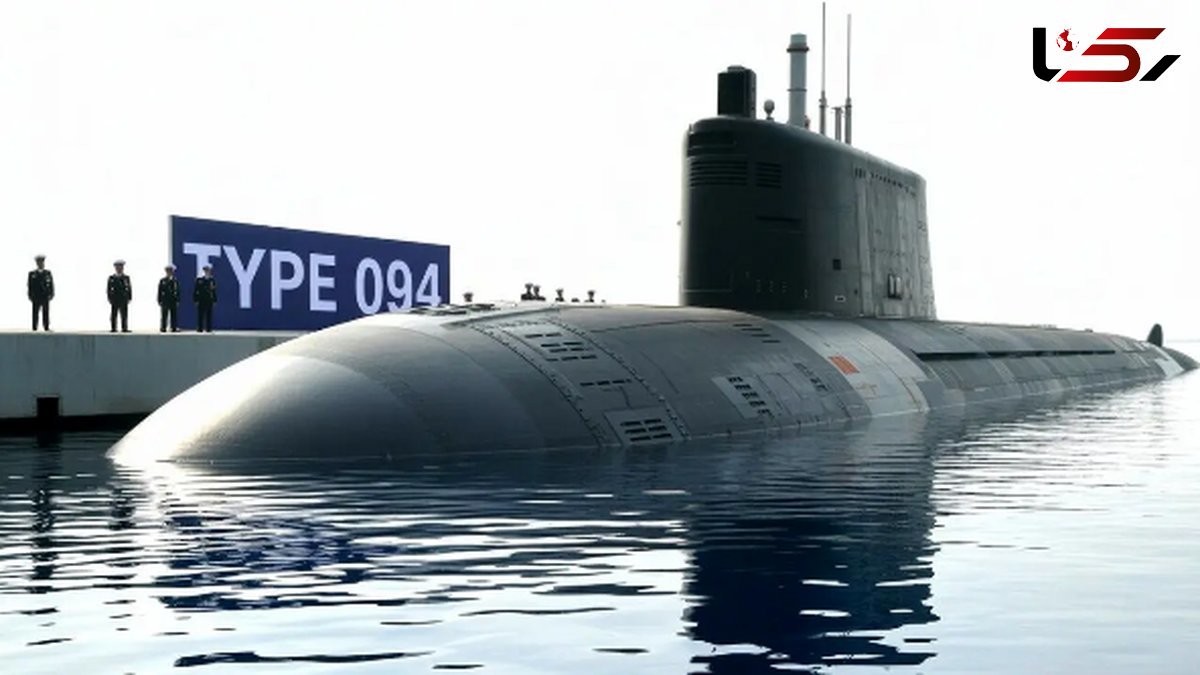China Realizes Its Nuclear Triple Dream:
New JL-3 Submarine-Launched Missile Demonstrates Power from the Depths
Rokna Political Desk: The Chinese Navy has taken a major step in strengthening its strategic deterrence capabilities by unveiling the JL-3 submarine-launched ballistic nuclear missile. With an impressive range of up to 12,000 kilometers, this missile can target key points across the United States from the depths of the South China Sea.

The emergence of the JL-3 is not merely symbolic; it is the result of nearly two decades of continuous development of strategic missiles aimed at providing China with a credible naval deterrent. Succeeding the JL-2, this missile represents significant advancements in range, survivability, and warhead capability. With an estimated range between 9,000 and 12,000 kilometers, it can strike targets across the United States from the South China Sea.
The JL-3 is designed for deployment on Type 094A ballistic nuclear submarines and the next-generation Type 096. Utilizing solid-fuel propulsion, advanced guidance systems, and multiple independently targetable reentry vehicles (MIRVs), it can bypass missile defense systems and simultaneously destroy multiple strategic targets. Military analysts believe each JL-3 missile has the capability to carry three to five nuclear warheads, or a combination of warheads and penetration aids to defeat U.S. missile defense systems.

End of Ambiguity About China’s Missile Capabilities
Publicly showcasing the JL-3 marks the end of China’s “strategic ambiguity” policy. While the JL-2 was designed only for regional strikes, the JL-3 now positions China alongside the United States and Russia among the few countries possessing submarine-launched missiles with global range. Consequently, the JL-3 joins the U.S. Trident II D5 and Russian RSM-56 Bulava as part of the elite class of global SLBMs.
New Challenges for the United States
With China’s formal and public unveiling of the JL-3, the U.S. now faces new defensive challenges:
-
The extended range of the JL-3 means Chinese submarines can threaten U.S. territory without leaving the South China Sea, reducing the likelihood of detection by U.S. and allied anti-submarine operations.
-
MIRV capability complicates U.S. missile defense, as each JL-3 launch could release multiple warheads across a wide area, overwhelming existing interceptor systems.
The deployment of the JL-3 is directly linked to China’s strategic submarine fleet. The Type 094A, an upgraded version of the Jin-class (Type 094), can likely carry twelve SLBMs, now upgraded from JL-2 to JL-3. These submarines feature improvements in noise reduction, sonar systems, and reactor performance. While still noisier than the U.S. Ohio-class or Russian Borei-class, their deployment allows for long-range deterrent patrols. China reportedly has at least six Type 094/094A submarines in active service.
A Major Leap in Submarine Generations
The Type 096 submarine, currently under construction at Bohai Shipbuilding, represents a generational leap in China’s undersea strategic capabilities. It is expected to feature a new stealth hull design, air-independent propulsion, advanced sonar arrays, and noise-reduction technologies.
This submarine is projected to carry 16 to 24 JL-3 missiles, and upon full deployment, will significantly enhance China’s nuclear deterrence. The JL-3 and its carrier submarines provide a survivable and mobile option for surprise strikes across vast oceanic areas, coinciding with the unprecedented expansion of China’s entire submarine fleet.
By 2025, the Chinese Navy, with 76 to 80 active submarines, will have the largest submarine fleet in the world by number, including six SSBNs of the Type 094/094A class, approximately seven to nine nuclear attack submarines such as the Shang-class (093A), and around 60 modern diesel-electric submarines, including the Yuan-class (039B/C) equipped with air-independent propulsion.
Although China’s nuclear submarines still lag behind the U.S. Navy in terms of stealth and endurance, the rapid pace of shipbuilding and technological advancements is quickly closing this gap.
The combination of these factors has transformed China into a power with not only numerical superiority but also operational flexibility in undersea warfare. With the introduction of the JL-3, China can now target multiple locations across continents from concealed submarines.
Send Comments